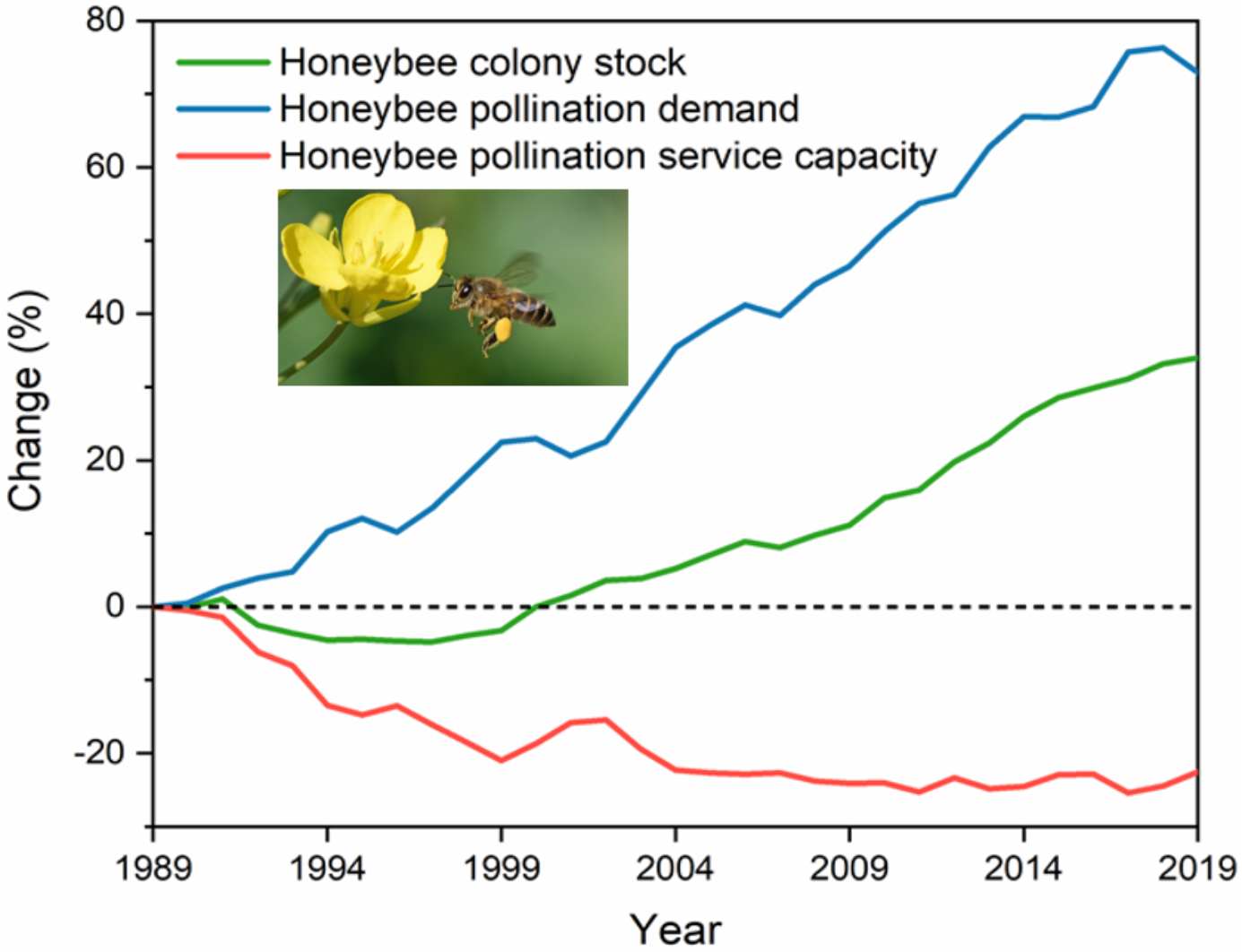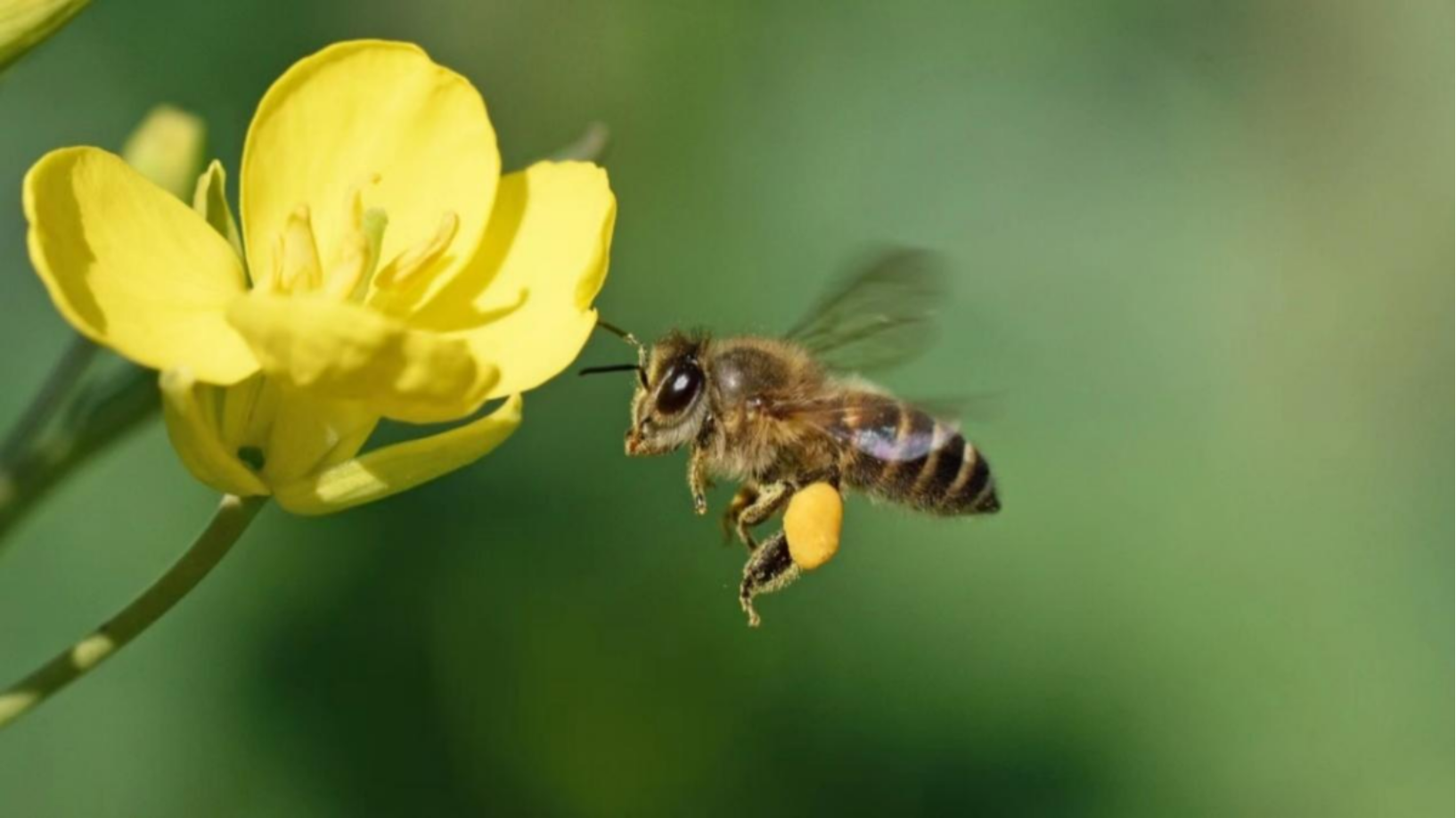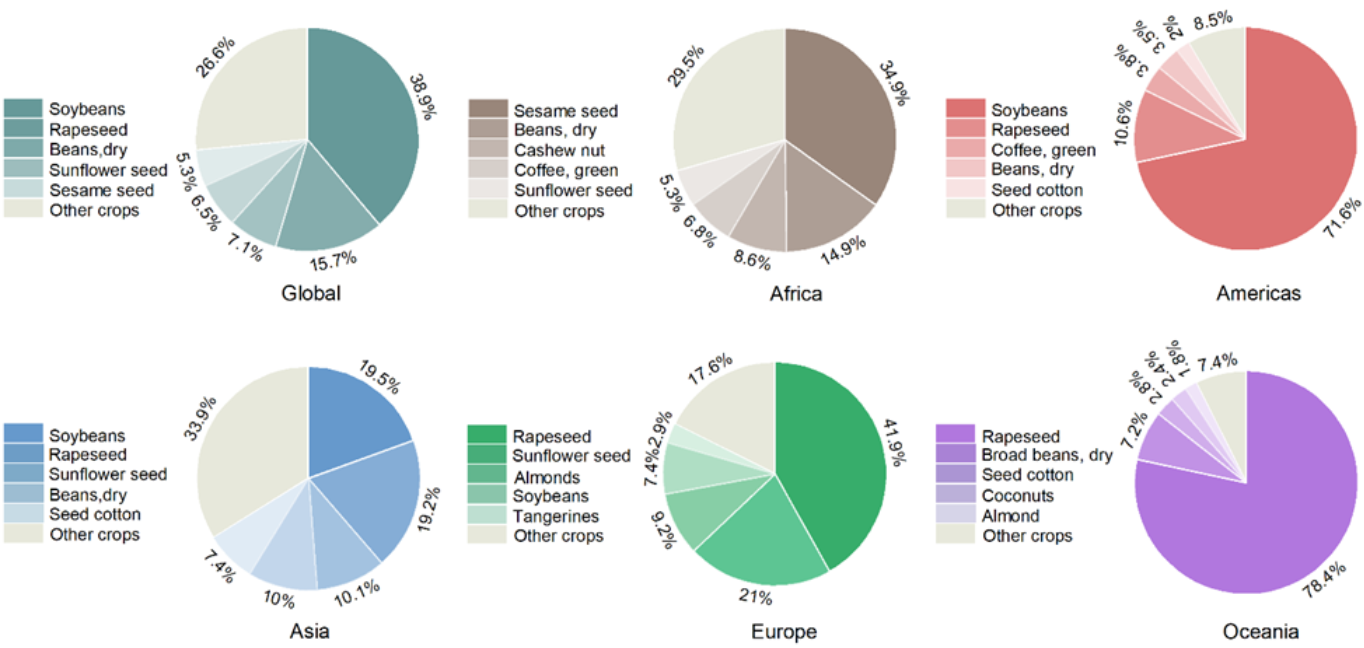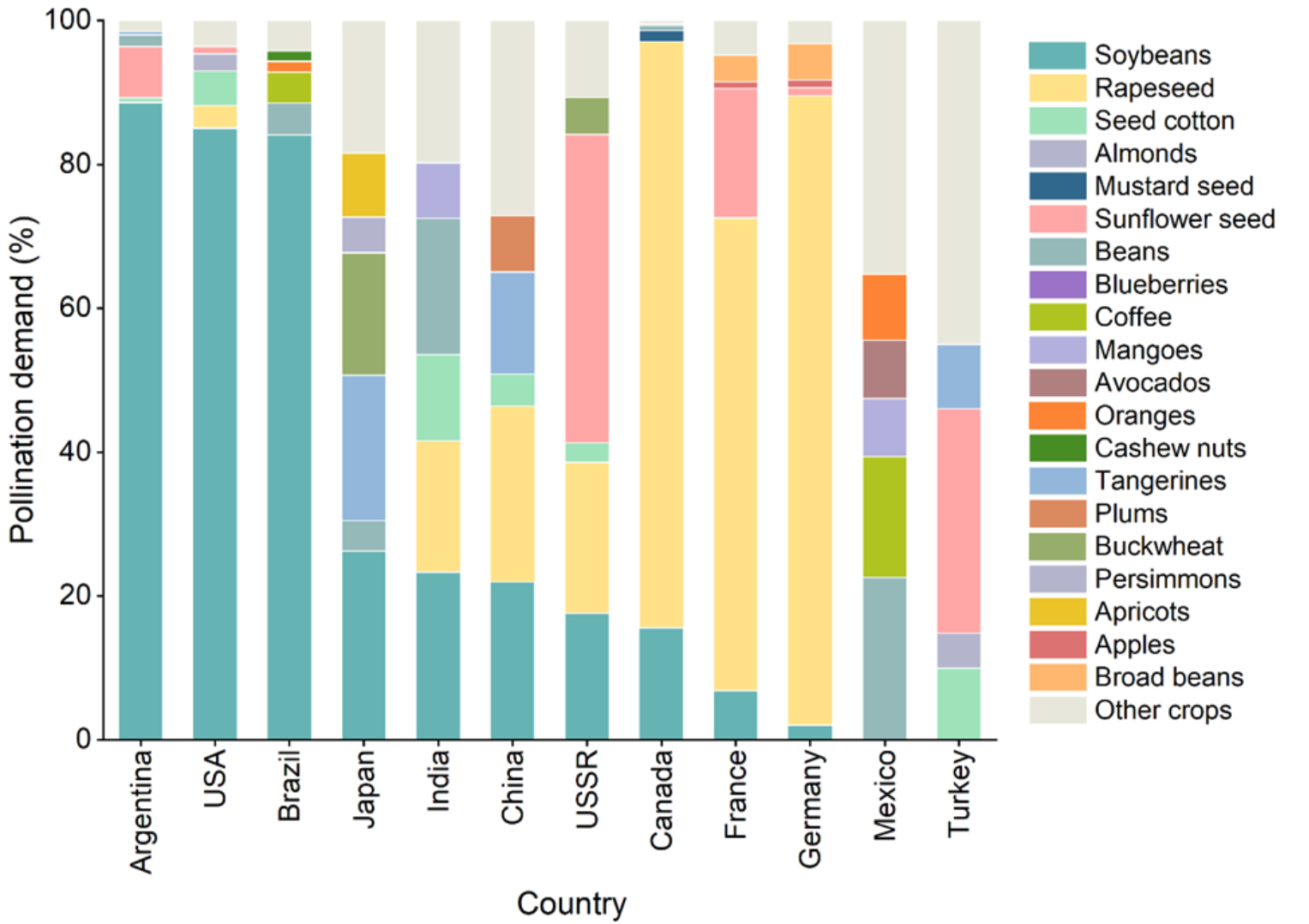Study shows existing bee populations are far too insufficient to supply global agricultural pollination needs
Date:2022-07-06
Recently, Institute of Apicultural Research, Chinese Academy of Agricultural Sciences, in cooperation with the National University of Rio Negro, Argentina, found global agriculture has increasingly relied on pollinator bees in the past 30 years (1989-2019). However, the quantity of domestic bees and pollination service capacity (PSC) are far from sufficient to satisfy the optimal pollination needs of global agriculture. The study shows that the development of beekeeping is a significant strategy to maintain the sustainable development of global agriculture and guarantee the security of food supply. The related research results were published in 《Agriculture Ecosystems & Environment》.

Fig 1. Changes in global agricultural pollination demand and domestic bees PSC in the past 30 years

Fig 2. Oilseed crops are the pollinator-dependent crops that are most dependent on bees in the world
It is reported that pollinators play a very significant role in agricultural production. 75.7% of the main crops rely on insect pollination around the whole world, and the economic value produced by insect pollination accounts for 9.5% of the global crop output value. In the past 60 years, the proportion of global agricultural pollinator-dependent crops continuously increased, which shows pollinators have played an increasingly important role in crop production. In recent decades, the number of wild pollinators has decreased sharply because of environmental damage, irrational use of pesticides and many other factors. In the context of this situation, it remains unclear whether domestic bees can satisfy agricultural pollination needs. Therefore, the research team analyzed the planting situation of 49 kinds of crops that rely on bee pollination and the number of bee colonies in the world from 1989 to 2019 to learn the global agricultural pollination needs and domestic bee PSC.

Fig 3. The five crops with the highest pollination demand at the global and regional levels in 2019
The results show that the global agricultural pollination demand showed an increasing trend from 1989 to 2019, but the PSC of domestic bees was declining year by year. Over the past 30 years, global agricultural pollination demand has grown at an average annual rate of 1.78%, which is twice of domestic bee colonies’ annual growth rate. As of 2019, global agricultural demand for pollinator bees was as high as 2.3 times the actual colony size. Among manycrops, the pollination demand of oilseed crops accounts for more than 70% of all crops, of which two crops, soybean and rape, account for more than 50%. There were significant differences in agricultural pollination demand, domestic bee PSC, and pollinator-dependent crop diversity between different regions. In addition, the fluctuation trend of agricultural pollination demand in different regions was positively correlated with the fluctuation trend of crop diversity. Compared with Asian countries like China, India, and Japan, which have high diversity of pollinator-dependent crops, Argentina, Brazil, the United States and other American countries with low crop diversity, the number of domestic bees is far from meeting the needs of crop pollination. The research results provide an important scientific basis for formulating the development plan of beekeeping and realizing the sustainable development of agriculture.

Fig 4. Proportion of pollination requirements of different crops in major agricultural countries in the world in 2019
Link:https://doi.org/10.1016/j.agee.2022.108003